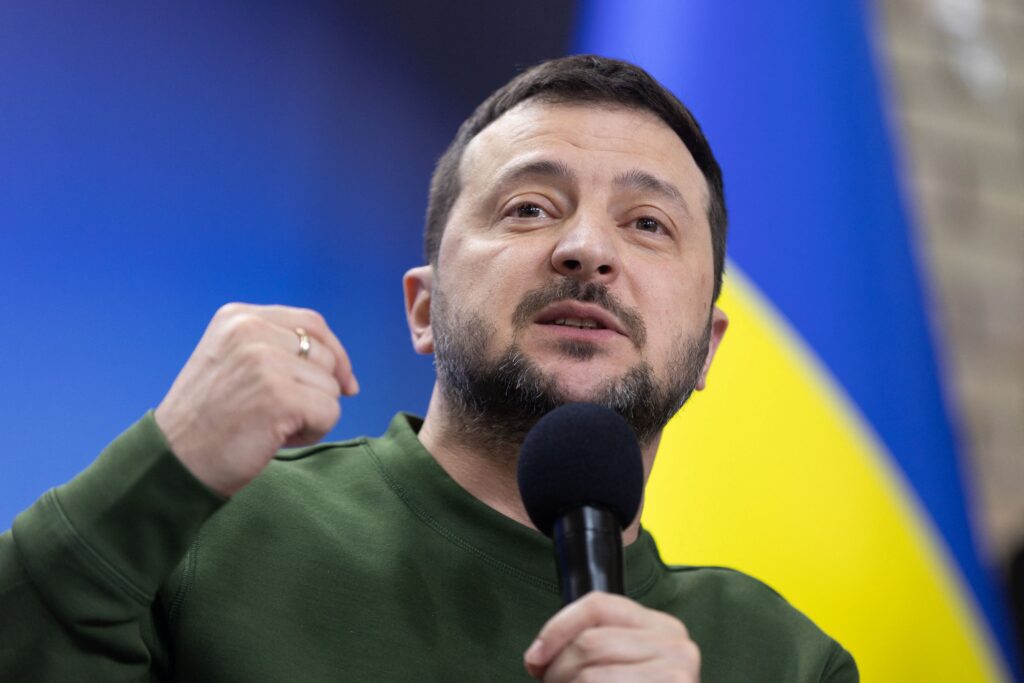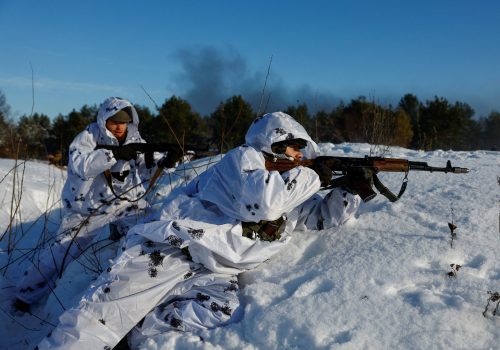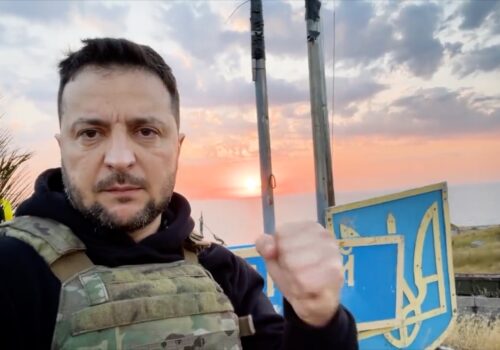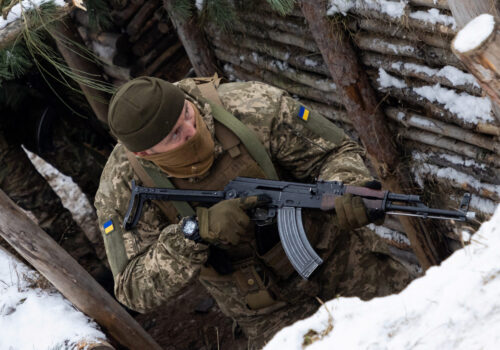To mark this year’s Ukrainian Unity Day on January 22, Ukrainian President Volodymyr Zelenskyy issued a decree calling for efforts to research, publicize, and safeguard Ukrainian cultural identity in regions of today’s Russian Federation “historically inhabited by Ukrainians.” The move was a masterful piece of trolling by the Ukrainian leader, while also representing a long overdue history lesson for his Russian counterpart.
For years, Vladimir Putin has made a habit of rewriting the past in order to deny Ukraine’s right to exist and justify his ongoing invasion of the country. However, his claims rely on centuries of Russian imperial propaganda that bear little resemblance to the historical reality.
Since the Russian invasion of Ukraine began in spring 2014 with the seizure of Crimea, Putin has resurrected the old Czarist era administrative term of “Novorossiya” (“New Russia”) to refer to the regions of southern and eastern Ukraine that he claims are “historically Russian lands.” He has frequently dismissed Ukrainian claims to these regions, while insisting they were erroneously handed to Ukraine by Soviet leader Vladimir Lenin in the aftermath of the Bolshevik Revolution.
Such arguments have long circulated in Russian nationalist circles. Indeed, one prominent advocate was celebrated Soviet dissident Alexander Solzhenitsyn, who opposed Ukrainian independence and openly questioned the country’s claims to its southern and eastern regions. Solzhenitsyn’s troubling legacy of support for Russian imperialism illustrates why many Ukrainians continue to believe Russian liberalism ends at the border with Ukraine.
Stay updated
As the world watches the Russian invasion of Ukraine unfold, UkraineAlert delivers the best Atlantic Council expert insight and analysis on Ukraine twice a week directly to your inbox.
Putin laid out his historical claims to Ukraine in a 5000-word essay published in July 2021 that read like a declaration of war against Ukrainian statehood. Many now see this chilling document as an ideological blueprint for the full-scale invasion that was to follow just seven months later.
When speaking to domestic Russian audiences, Putin has not shied away from describing the invasion in overtly imperialistic terms as a war of conquest. In summer 2022, he directly compared his invasion to the imperial conquests of eighteenth century Russian Czar Peter the Great. More recently, he has referred to the areas of Ukraine currently under Russian occupation as “conquests.”
Putin’s stubborn refusal to recognize Ukraine’s right to exist has sometimes led to instances of selective blindness. In May 2023, he was filmed examining a seventeenth century map of Eastern Europe before declaring “no Ukraine ever existed in the history of mankind,” despite the fact that the word “Ukraine” was clearly marked on the map in front of him.
The term “Ukraine” can actually be traced back much further than the seventeenth century. Indeed, as Harvard University Professor Serhii Plokhy and others have noted, “Ukraine” has medieval origins and was first used by twelfth century chroniclers, around six hundred years before Peter the Great rebranded Muscovy as the Russian Empire.
Putin’s claims regarding Russia’s ancestral ties to southern and eastern Ukraine are equally historically illiterate. Throughout the Middle Ages, these regions formed the sparsely populated “Wild Fields” that served as an informal boundary separating the Mongol and Turkish empires from Ukraine and the rest of Europe. Early records show a Ukrainian presence including Cossacks and agricultural communities.
Even as Russian imperial influence spread southward toward the Black Sea, most of the territory Putin now refers to as Novorossiya continued to have a majority Ukrainian population. The only official demographic data from this era, the Czarist census of 1897, creates a picture of highly cosmopolitan urban populations, including significant French and Italian contingents in Odesa and a prominent Greek community in Mariupol. Meanwhile, the rural population throughout today’s southern and eastern Ukraine remained predominantly Ukrainian. In other words, Putin’s assertion that modern Russia has some kind of ancient claim to these regions is complete nonsense.
Eurasia Center events

Zelenskyy is now signalling to Putin that Ukraine has historical claims of its own. The Ukrainian leader’s recent decree does not indicate Kyiv’s intention to annex Russian territory, but it does send a clear message to Moscow that Ukrainians have a proud national history and will defend themselves against Russian attempts to deny their existence or extinguish Ukrainian identity.
Zelenskyy’s decree also serves as a not-so-subtle reminder that Russia’s own borders are extremely vulnerable to the kind of reckless historical revisionism being pushed by Putin. As the leader of the world’s largest country, which has expanded for centuries to encompass more than ten percent of the planet’s entire landmass, Putin is particularly unwise to argue in favor of reinstating old borders. If taken to its logical conclusion, Putin’s revisionist stance would see Russia cede land to everyone from Finland and Germany to China and Japan. It would also destabilize the wider world, leading to endless border disputes throughout Europe, Africa, and beyond.
Putin’s weaponization of bad history has helped fuel the bloodiest European conflict since World War II. His claims to Ukrainian land are based on an outdated imperialistic mythology that has no place in the twenty-first century and poses a grave threat to global security. The Russian dictator believes he can distort the past to justify the crimes of the present. Unless he is stopped, other countries will suffer Ukraine’s fate.
Taras Kuzio is a professor of political science at the National University of Kyiv Mohyla Academy and an associate research fellow at the Henry Jackson Society. He is the author of “Fascism and Genocide. Russia’s War Against Ukrainians.”
Further reading
The views expressed in UkraineAlert are solely those of the authors and do not necessarily reflect the views of the Atlantic Council, its staff, or its supporters.

The Eurasia Center’s mission is to enhance transatlantic cooperation in promoting stability, democratic values and prosperity in Eurasia, from Eastern Europe and Turkey in the West to the Caucasus, Russia and Central Asia in the East.
Follow us on social media
and support our work
Image: Ukrainian President Volodymyr Zelenskyy in Kyiv, Ukraine on January 22, 2024. (Photo by Ukrainian Presidency via ABACAPRESS.COM)




